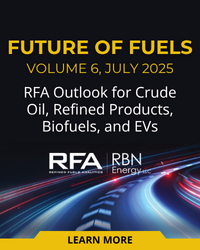Crude oil production in the Permian grew steadily through the 2010s and now tops 4.5 MMb/d — five times what it was at the start of the decade. Production in the Bakken and the Denver-Julesburg (D-J) Basin sagged when crude prices plummeted in 2014-15, but both regions chugged their way back, with output setting new records every month or two in 2018-19. SCOOP and STACK are another story. Only a year or two ago, many producers and others were talking up the neighboring crude-focused plays in central Oklahoma as the next big thing, maybe even a Sooner State Permian. But while SCOOP/STACK production increased through 2018, it’s been flat or falling ever since, and most producers there have been slashing their drilling activity. Today, we look at recent developments in the once-hot region.
In the spring of 2018, in Oklahoma Borderline, we blogged about midstreamers in SCOOP and STACK struggling to keep pace with rising production of crude oil and associated gas — the latter referring to the large, mixed volumes of natural gas and NGLs that emerge from wells with crude as a by-product. For example, a joint venture of Plains All American and Phillips 66 Partners in late 2017 extended their STACK crude pipeline system by 35 miles into eastern Blaine County and increased the system’s capacity from 100 Mb/d to 250 Mb/d. In early 2018, Navigator Energy Services’ Glass Mountain system was extended by 44 miles to pick up STACK production from southern Blaine County. And at about the same time, Velocity Midstream Partners finished installing a 45-mile crude oil pipeline alongside the company’s existing Central Oklahoma Pipeline, which transports condensate through the fairway of SCOOP. That new pipe enabled SCOOP producers to segregate their heavier crude barrels (produced from the Springer and Woodford oil formations) from their lighter barrels (produced from the Woodford condensate formation). There was at least as much activity on the natural gas and NGL fronts. With associated gas production soaring, central Oklahoma appeared to need new gas processing plants as well as new takeaway pipelines for gas and NGLs — and midstreamers, backed by long-term commitments from producers, were obliging.
A lot has changed since then, little of it for the better. Despite the ups and downs of crude oil prices over the past 18 months, production has continued growing in the Permian, the Bakken and the D-J Basin. In the Anadarko region, which is dominated by SCOOP and STACK, crude oil output rose from 512 Mb/d in May 2018 to a peak of 587 Mb/d in April 2019 (blue-shaded area in Figure 1) — a gain of 15% in that period — according to the Energy Information Administration (EIA). Since then, however, production in the region has dropped by 8% to 541 Mb/d (as of November).
Join Backstage Pass to Read Full Article








